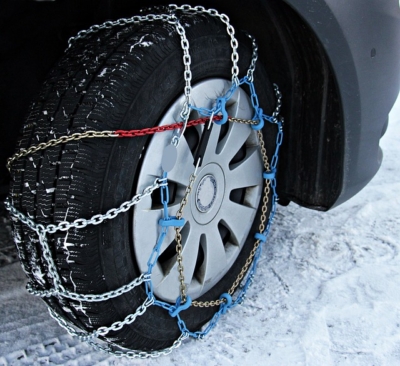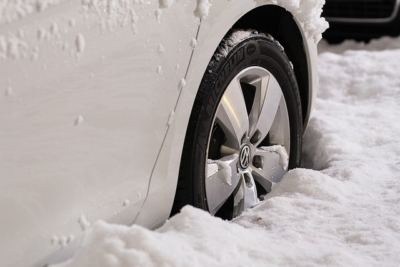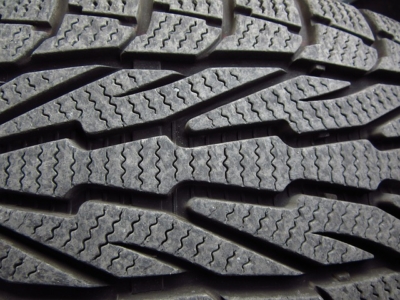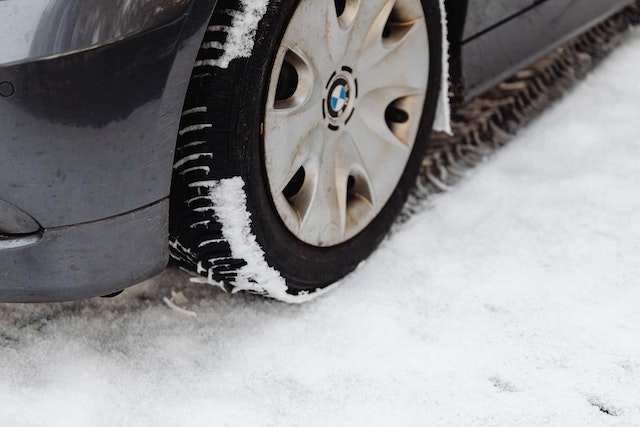As the winter season approaches, it’s time to start thinking about how you can keep yourself and your vehicle safe on icy roads.

One of the most important things you can do is invest in a set of winter tires. These specially designed tires are essential for anyone who drives through snowy or slushy conditions, as they provide superior traction and handling compared to regular tires. In this blog post, we’ll take a closer look at what makes winter tires so effective, why they’re essential for staying safe during the colder months, and when you should make the switch from your regular tires to these specialized alternatives. So buckle up and get ready to learn all about Winter Tires 101!
What are winter tires?
Winter tires, also known as snow tires, are specially designed to provide better grip and handling in snowy or icy conditions. They have unique tread patterns and rubber compounds that enable them to perform well on slippery surfaces.
Winter tires have deeper treads with grooves that help disperse snow and slush, allowing the tire’s surface to make contact with the road more effectively. The rubber used in winter tires is also softer than regular tire rubber, which helps it remain pliable at lower temperatures. This allows for improved flexibility and traction on cold roads.
It’s important to note that winter tires aren’t just for areas with heavy snowfall – even if you live somewhere where it only snows occasionally, they’re still an essential investment for staying safe on the road during colder months. In fact, many regions require drivers to use winter tires during certain weather conditions.
Investing in a set of high-quality winter tires can be a game-changer when it comes to driving safety during wintertime.
How do winter tires work?
Winter tires are specifically designed to perform better than regular or all-season tires when temperatures drop below 7 degrees Celsius. They’re made with a softer rubber compound that remains pliable in colder temperatures, allowing them to maintain their grip on the road surface.

In addition to the special rubber compound, winter tires also have unique tread patterns that allow for better traction and control on snow and ice-covered roads. The grooves in the tire help disperse water, slush, and snow from under the tire’s contact patch while biting edges provide additional grip.
Moreover, a good set of winter tires will also feature sipes or tiny cuts throughout the tread blocks which provide even more biting edges as they come into contact with slippery surfaces like ice. This allows you to stop faster and turn more effectively on snowy or icy roads.
Winter tires work by providing superior grip and handling on cold weather conditions due to its specialized construction materials and design features that enable it to cope with low-temperature situations much better than other types of vehicle tires.
Why do you need winter tires?
Winter driving can present many challenges that are not experienced during the rest of the year. In colder temperatures, roads become icy and snow-packed which makes it difficult to maintain traction while driving. Winter tires are designed specifically for these conditions and perform better in cold weather than all-season or summer tires.
Winter tires have a unique tread pattern made up of deep grooves and small slits called sipes which provide better grip on snowy and icy roads. The rubber compound used is also softer than that found in other types of tires, allowing them to remain flexible even in extreme cold temperatures which enhances their ability to grip the road.
Installing winter tires can greatly enhance your safety while driving in winter conditions. The improved traction means you will be able to stop more quickly if necessary, reducing your risk of accidents caused by sliding on slick surfaces. Additionally, having winter tires installed may help lower your insurance rates as some companies offer discounts for drivers who use them.
It’s important to remember that even with winter tires, caution should still be exercised when driving in inclement weather conditions. It’s always best to drive slower than usual and increase following distances between vehicles when there is snow or ice on the roadways.

Investing in a set of winter tires will not only improve your safety but also give you peace of mind knowing you’re prepared for whatever mother nature throws at you this season.
When should you put winter tires on your car?
As the temperatures start to drop and snowflakes begin to fall, it’s important to consider when you should put winter tires on your car. The general rule of thumb is to switch over once temperatures consistently stay below 7°C (45°F).
Winter tires are designed with a special rubber compound that allows for better grip and traction in cold weather conditions. This means they can handle icy roads, snowy streets, and slushy highways much more effectively than regular all-season or summer tires.
It may be tempting to hold off on switching over until there is already snow or ice on the roads, but this can be dangerous as winter tires require time and space for proper installation. It’s best to schedule an appointment before the first big storm hits so you’re not caught off-guard.
If you live in areas with milder winters or don’t drive often during colder months, all-season tires may suffice. However, if you regularly commute through harsher conditions or live in areas prone to severe weather patterns then winter tires are highly recommended.
Remember – having proper traction on your vehicle can make all the difference between a safe commute and one filled with accidents. So plan ahead and ensure your safety by getting those winter tires installed at the right time!
How to take care of your winter tires
Taking care of your winter tires is crucial to ensure their longevity and performance during the cold season. Here are some tips on how to maintain your winter tires:
- Firstly, check the tire pressure regularly as it tends to decrease in colder temperatures. Low tire pressure can lead to decreased grip and poor handling which increases the risk of accidents.
- Secondly, inspect your tires for any signs of wear or damage such as punctures, cuts or cracks on the tread surface. If you notice any issues with your tires, replace them immediately as damaged tires could be a potential hazard.
- Thirdly, rotate your winter tires every 6 months or after driving 5000-8000 miles. Rotating will help even out tire wear and extend their lifespan.Store your winter tires properly when not in use. Remove any debris from them before storing them in a cool dry place away from sunlight and moisture.
By following these simple steps, you can ensure that your winter tires will perform at their best while keeping you safe on icy roads this winter season!
Lastly
Winter tires are a must-have for anyone who lives in an area with harsh winters. They provide increased traction and safety on icy, snowy or wet roads. With their specially designed treads and rubber compounds, winter tires offer better grip and handling in cold temperatures than all-season tires.
Remember to always check your tire pressure regularly and store your winter tires properly during the off-season. Proper maintenance will help ensure they last longer and perform at their best when you need them most.
Investing in a set of good quality winter tires is one of the smartest decisions you can make as a driver. So if you haven’t already, it’s time to swap out those all-seasons for some reliable winter tires! Stay safe on the road this season by choosing the right set of winter wheels for your vehicle.

